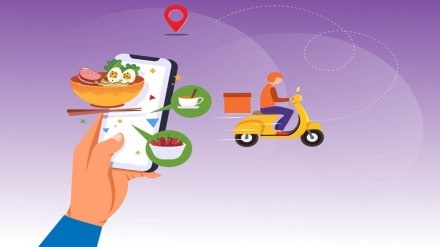By Rajat Kapoor
The restaurant industry has always been driven by customer preferences, and over the years, I’ve witnessed firsthand how these preferences evolve. There was a time when dining out was the primary way to enjoy restaurant-quality food. Customers would visit, sit down, and immerse themselves not just in the food, but in the atmosphere and service as well. Fast forward to today, and a significant portion of the dining experience is happening at home. The rise of food delivery services has reshaped our operations, and it’s clear that the delivery-first model is no longer just a trend—it’s become a core part of how we engage with our customers.
The rise of delivery: A change in consumer behaviour
It’s no secret that the demand for food delivery has been growing for years. Even before the pandemic forced restaurants to close their doors, platforms like Zomato and Swiggy were gaining traction. What was once seen as a luxury or occasional convenience has now become an everyday expectation for many consumers. The pandemic accelerated this shift, and even as restrictions have lifted, the reliance on food delivery has remained strong.
From a business perspective, this shift has compelled us to re-evaluate not only how we deliver food but also what we deliver. While we continue to serve customers who choose to dine with us in person, it’s increasingly clear that the future of dining lies in delivery. For restaurants that have traditionally relied on dine-in customers, adapting to this new reality is essential.
Rethinking the menu for delivery
One of the first and most significant changes we’ve made involves our menu. Some dishes simply don’t travel well. Whether it’s a sizzler that cools down too quickly or a delicate salad that wilts, we had to consider how our food would hold up during the delivery process.
It’s not just about creating food that travels well; it’s about ensuring that the experience we provide—whether in the restaurant or through delivery—remains consistent. The challenge is not merely delivering food but delivering an experience that matches the quality and taste that customers expect from us.
The role of technology in delivery
Technology plays a significant role in how we handle delivery operations. Gone are the days when a customer simply called in their order. Today, managing multiple food delivery platforms, monitoring orders in real-time, and tracking customer feedback has become a complex operation. For a restaurant like ours, staying on top of these platforms and ensuring seamless integration with our kitchen systems is crucial.
We’ve invested in technology to streamline this process—using analytics to predict busy periods, optimise order fulfilment, and monitor customer satisfaction. This data-driven approach helps us manage the complexities of delivering food at scale while maintaining quality.
The rise of cloud kitchens (or ghost kitchens) has also become an option for many in the industry. These kitchens are designed specifically to fulfil delivery orders without the overhead of a full-service restaurant. While we’ve not fully adopted this model yet, it’s something that can help meet delivery demand more efficiently, especially in areas with a high concentration of orders.
Speed, efficiency, and customer expectations
One of the most noticeable changes we’ve had to adjust to is the growing demand for faster delivery times. Customers now expect their meals to arrive quickly, and ensuring that the food remains fresh and hot when it gets there is no easy task. At the same time, speed cannot come at the expense of quality. For many restaurants, managing this balance between speed and quality requires refining kitchen operations, ensuring that food is packed properly, and optimising delivery routes. Delivery time expectations are no longer solely about getting the food there quickly; it’s about ensuring it arrives in the same condition it would if the customer were dining in.
For us, this has meant considering everything from kitchen workflows to packaging solutions that help maintain the temperature of the food. Third-party delivery services assist with speed, but we’ve also explored ways to maintain greater control over delivery logistics, whether through partnerships or investing in our own delivery infrastructure.
The in-house experience isn’t going anywhere
While it’s clear that delivery is here to stay, we haven’t lost sight of the value of the dine-in experience. Dining out isn’t just about food—it’s about the experience. The ambience, the service, and the social aspects of eating together are something that can’t be replicated by delivery.
A dual approach to customer needs
Our strategy is to effectively meet both needs. We have introduced limited-time promotions and loyalty programmes that incentivise customers to dine with us in person, while also ensuring that our delivery operations are streamlined, efficient, and reliable. By creating compelling reasons for customers to experience our restaurant firsthand, we hope to foster a deeper connection with our brand.
Sustainability and the long-term future of delivery
As food delivery continues to expand, sustainability has become a pressing concern. The nature of delivery involves significant packaging and logistics, which can impact the environment. In response, we have taken proactive steps to reduce our carbon footprint. This includes adopting eco-friendly packaging solutions and optimising our delivery routes to minimise emissions. While we are making progress, we recognise that there is still much work to be done.
Sustainability extends beyond just environmental concerns; it also encompasses waste reduction. We are actively exploring more accurate forecasting methods to better align our production with customer demand, thereby minimising food waste and ensuring that we operate responsibly. The transition to a delivery-first model represents a fundamental shift that the restaurant industry cannot overlook. While this change presents its challenges, it has also unveiled new opportunities for growth and customer engagement. The future of dining will likely encompass a blend of both dine-in and delivery experiences, but one thing is clear: the delivery-first model is here to stay.
The author is director, Gola Sizzlers and Cafe Hawkers. Views expressed are personal and not necessarily those of financialexpress.com.
